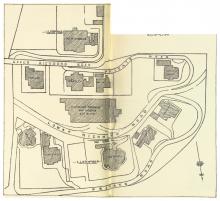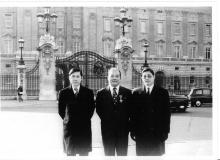Oaklands [c.1895-c.1960]
Primary tabs











Submitted by Herostratus on Wed, 2016-05-25 17:32
Current condition:
Demolished / No longer exists
Date Place completed:
c.1895-01-01 (Year, Month, Day are approximate)
Date Place demolished:
c.1960-01-01 (Year, Month, Day are approximate)
Building was originally No 1 Babington Path before becoming No 1 Oaklands Path. Built by the Richmond Easte company in the 1890's.
Building was likely renamed Ardmore from Oaklands c1900 (although confusingly Oaklands appears in later juror lists), occupied by Butterfield and Swire employee's in the early 1900's.




Comments
1901 address
In 1901 I think the address for this building was "1, Lower Richmond Road". That's from looking at the 1901 map - it shows the five buildings from right to left were this one / Belvoir Lodge / Edenhall / Stonybrook Cottage / Inglewood, numbered 1 to 5. The 1901 Jurors list shows Stonybrook & Inglewood, and gives their addresses as Lower Richmond Road.
I had assumed they were
I had assumed they were Babington Path numbers as the entrances to all but Edenhall were on Babington Path but Babington was an unnamed private road pre 1900. From the government Gazette I found the following:
8th February 1900
Lower Richmond Road:
No 1 - Oaklands
No 2 - Ardmore
No 3 - Eden Hall
No 4 - Stonywood Cottage
No 5 - Inglewood
26th January 1904
Lower Richmond Road becomes Lyttelton Road
Babington Path named
Oaklands Path named
Richmond Terrace renamed Parkview
End of Robinson Road becomes Park Road
Upper Richmond Road becomes Robinson Road
3rd February 1904
Renumbering:
House names in general seem to change regularly.
That's good to have the
That's good to have the switch in street names & numberings documented, thanks for pinning it down.
I try and include sources and assumptions in notes here as much as possible. It helps other readers understand the why as well as the what, and correct me if there's a mistake. (Often the "other reader" has turned out to be me coming back to the topic after a year or two. Without the notes I'd have forgotten why I made a certain argument in the first place!)
Regards, David